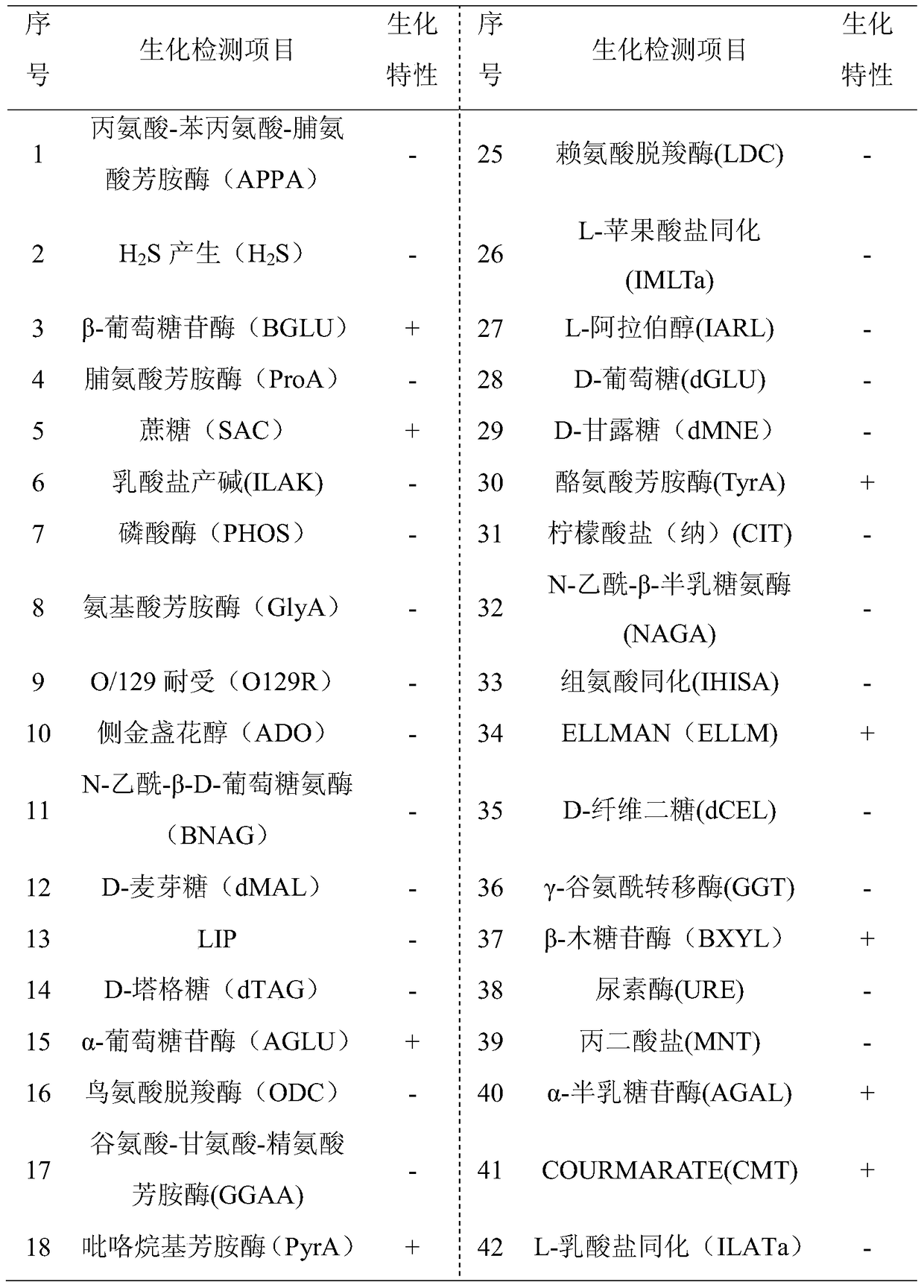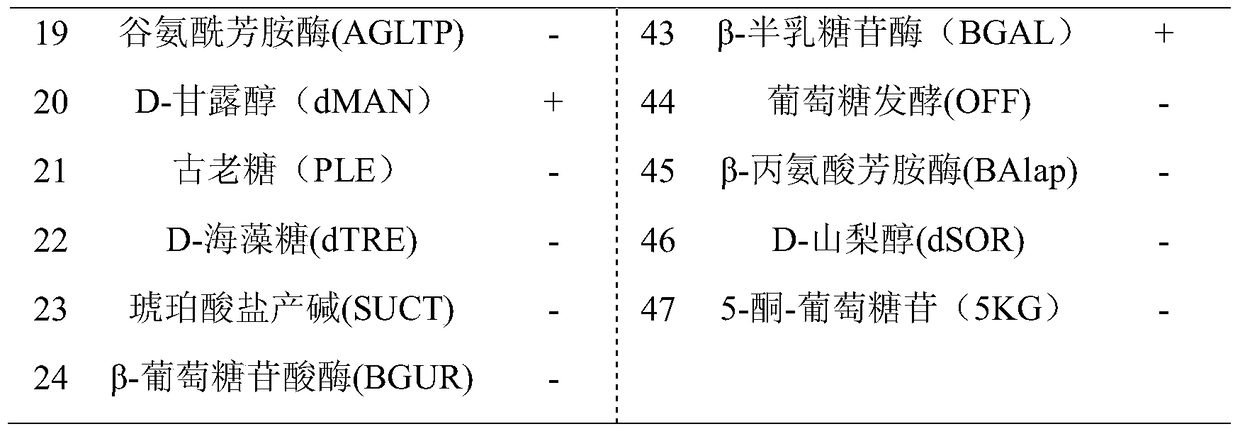A kind of microbacterium in intertidal zone and its application
A microbacillus and intertidal zone technology, applied in the field of microorganisms, to achieve the effect of ensuring food safety
- Summary
- Abstract
- Description
- Claims
- Application Information
AI Technical Summary
Problems solved by technology
Method used
Image
Examples
Embodiment 1
[0018] Example 1 Separation and purification of T-2 toxin-degrading microorganisms
[0019] The preparation of traditional shrimp paste: the commercially available fresh shrimps are selected, washed and drained, after beating, add 30% of the shrimp weight in salt, stir well and divide into two parts, one part is used as a sample of fresh shrimp paste, and the other part is submerged in a fermenter for fermentation Naturally fermented, exposed to the sun and dew at night, stirred twice a day, 20 minutes each time, and fermented for 20 days as a sample of fermented shrimp paste.
[0020] Take 2.00 g of the fresh shrimp paste and fermented shrimp paste samples above, divide the two batches of samples into 4 groups, add 0, 10, 20, and 30 ng of T-2 toxin, and carry out micro-fermentation under the same conditions. After 1d, 5d, 10d, 15d, and 20d of fermentation, LC-MS / MS was used to detect the residual amount of T-2 toxin in the fermentation broth.
[0021] Degradation rate of T-2...
Embodiment 2
[0023] Identification of the isolated bacterial strain of embodiment 2
[0024] The bacterial strain CAMT25481 isolated in Example 1 was analyzed for biochemical characteristics using the VITEK 2 Gram-negative Bacteria Identification Card, and referred to the "Bergery Bacteria Identification Manual". Phylogenetic analysis and strain identification were carried out with 16S rRNA analysis method.
[0025] The culture characteristics of strain CAMT25481 are: young cultures are bacillus, old cultures are spherical, 1.1~1.2μm×1.4~3.2μm, Gram positive; move with perinatal flagella, facultative anaerobic; on nutrient agar The colony is flat, light orange, and the pigment does not spread; it is not sporulating, not acid-resistant, and salt-tolerant; alkaliphilic, can grow at pH6.5-11.5; chemoheterotrophic bacteria, fermentative metabolism.
[0026] Biochemical properties of strain CAMT25481: producing β-glucuronidase, α-glucosidase, pyrrolidinyl arylase, tyrosine arylase, β-xylosidas...
Embodiment 3
[0033] Example 3 Test of Degradation Ability of Microbacterium CAMT25481 in the Intertidal Zone to T-2 Toxin
[0034] The pure culture of the above strain CAMT25481 was inoculated into nutrient broth NB containing 5, 10, 15, 20, 25 ng / mL T-2 toxin, wherein the concentration of the strain CAMT25481 was 10 5 -107 CFU / mL; vortex for 60s, culture in a full-temperature shaker cabinet at 30±1°C, 180r / min, after 72 hours, draw 2mL of NB enrichment solution into a centrifuge tube, add 2mL of ethyl acetate, vortex for 60s, and sonicate for 10min , take the supernatant in another centrifuge tube (if the stratification is not obvious, centrifuge at 4000r / min for 5min), repeat the extraction 3 times, and combine the extracts. The extract was blown dry at 60°C under a nitrogen blower. Aspirate 2mL methanol aqueous solution (V / V:3 / 7) to dissolve, vortex for 30s, and sonicate for 5min. Pass through a 0.22 μm filter membrane, detect the T-2 toxin content by LC-MS / MS, and record the experime...
PUM
 Login to View More
Login to View More Abstract
Description
Claims
Application Information
 Login to View More
Login to View More - R&D
- Intellectual Property
- Life Sciences
- Materials
- Tech Scout
- Unparalleled Data Quality
- Higher Quality Content
- 60% Fewer Hallucinations
Browse by: Latest US Patents, China's latest patents, Technical Efficacy Thesaurus, Application Domain, Technology Topic, Popular Technical Reports.
© 2025 PatSnap. All rights reserved.Legal|Privacy policy|Modern Slavery Act Transparency Statement|Sitemap|About US| Contact US: help@patsnap.com



